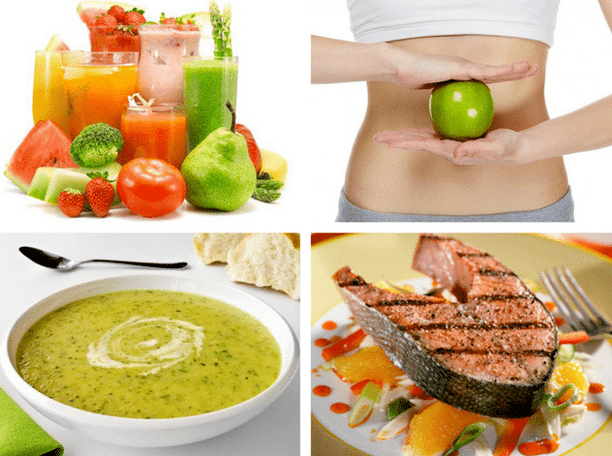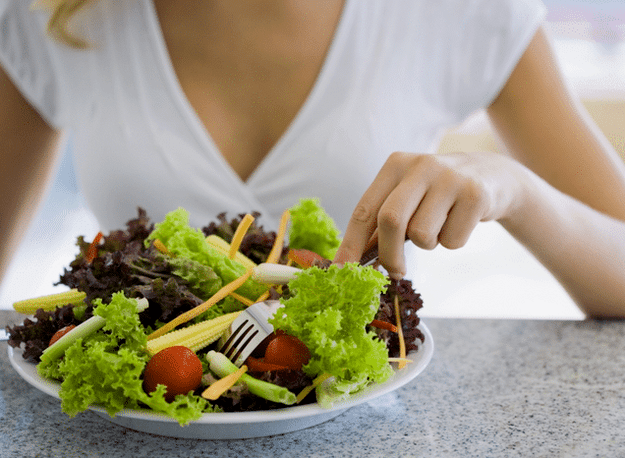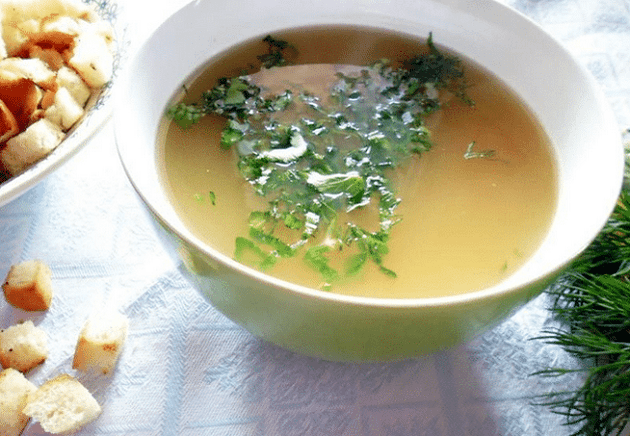If you have acute pancreatitis or if you are diagnosed with chronic pancreatitis, your life will not be the same: you will have to change everything.
Basic taboos
In inflammation of the pancreas there is something to eat and drink under no circumstances. They include:
- Alcohol (any), grape juice, soda;
- Chocolate, heavy cream;
- By-products;
- Sheep's meat;
- Lard;
- FIG.
- duck;
- All fatty fish;
- goose;
- Smoked meat, lard;
- Banana;
- Fried, spicy;
- Hard boiled egg;
- Semi-finished products;
- Гроздов;
- Cooking fats;
- Dates;
- Rich broths;
- Jams, preserves;
- All kinds of canned food;
- Sunda (and ice cream in general);
- Omelet;
- Baking.
Acute pancreatitis

First, let's talk about nutrition in acute pancreatitis. Immediately after exacerbation and for the next two days you should not eat at all. We are only allowed five or six glasses of mineral water. Organ regeneration occurs due to the fact that gastric and pancreatic juice are not separated.
On the third day you can eat but unsalted liquid food high in carbohydrates. Wheat crackers, soups with vegetables and cereals with a weak broth are allowed. Then you can enter steamed omelets, turkey fillet, chicken, lean fish.
On the fifth day, the calorie content increases to 700-800 kcal, of which 200 g are carbohydrates and 15 g are proteins. Fats are introduced between the sixth and ninth day.
The menu during this period should be as follows:
- Breakfast with rice porridge without milk, tea with sugar, orange (apple);
- Breakfast mashed carrots (potatoes), boiled low-fat fish or chicken (50 g), rosehip broth;
- 150 g broth (vegetable), 30 g boiled fish (beef), apple puree, mashed potatoes for lunch;
- Second breakfast. 50 g of cottage cheese (0-2%) with sugar, sweet tea;
- Instead of dinner - a spoonful of honey and boiled water (250 ml).
Recovery after exacerbation
Nutrition in pancreatic pancreatitis after exacerbation is more varied. If you try, you can really find fun and delicious recipes from the allowed. We eat 5-6 times a day. It is best to use steam when cooking, mash everything with a blender, cook.
You can eat:
- Meat with minimal fat (cut and cook). Cooking meatballs, steamed cutlets, meat souffles. Allowed lean beef, rabbit, turkey fillet, chicken, beef;
- Fish (you can use pollock, cod, pike, pike, flounder and other lean varieties). Boil or steam, steam cutlets are allowed;
- Oatmeal, buckwheat, semolina, rice. Barley with corn is rare. Cook in water (or milk and water in equal proportions);
- pasta. Do not add sauce, only olive oil, butter. Do not fry with garlic, oil, onion;
- Dairy products. Whole milk is not recommended. Fermented baked milk, kefir, cottage cheese up to 9%, soft cheeses are allowed;
- egg. Just like an omelet or lightly cooked. Use infrequently;
- Vegetables. Baked, boiled, pureed, vegetarian soups, stews. Pay attention to carrots, potatoes, melons, beets, green peas, cauliflower. You can not eat most of the family of crucifers, mushrooms, horseradish, raw onions, spinach, garlic, beans (common legumes), sweet peppers, sorrel;
- We also bake fruit, cook compotes, jellies, make mashed potatoes. Apricots, watermelons, melons are ideal;
- Dry white bread with pancreatitis, drink tea with spicy and not rich cookies;
- Homemade jelly, mousse. Less often marshmallows;
- Non-carbonated mineral water, compote, weak tea, rosehip broth, jelly.
Chronic form
The diet for chronic pancreatic pancreatitis differs from the menu for acute inflammation. The chronic "version" develops together with an acute inflammatory process of the gland, with cirrhosis, hepatitis, gallstone disease, ulcers of the intestines and stomach, atherosclerosis. The menu should take into account the background of the disease that has developed in pancreatitis.
The main method of treatment for you is not drugs, but a diet for chronic pancreatitis, whose approximate menu is based on several principles:
- We eat six times a day and little by little we need laxatives.
- Monitor your daily protein intake. 130 g per day are needed, plant proteins need 30% of this figure. Veal with beef, rabbit, turkey, pork with a minimum of fat, chicken and lean fish are recommended. In case of constant pain, the meat is cooked cut or steamed. You should not give up low-fat fish and meat dishes: they will prevent fatty degeneration of the liver, which is characteristic of chronic inflammatory processes in the pancreas;
- The conversion of fat is counteracted by home-made fresh cottage cheese (not sour and with a minimum percentage of fat). Other dairy products are also needed. Whole milk is added to the first dishes, cereals, jelly or drink half a glass a day (if well tolerated). The fat content of milk should not exceed 2, 5%. If you feel good, say cheese (a little) with a minimum of fat and soft varieties. Do not forget about kefir and fermented baked milk (homemade is the best option). There is no need to eat yogurt from the store with flavor and starch: the benefits here are small;
- Eggs. Goals are not recommended. Eggs are acceptable as an addition to other dishes, in the form of steamed omelet (protein), broken down proteins in other dishes;
- Vegetable proteins. We are looking for them in rice, pasta, yesterday's bread, oatmeal, semolina, breadcrumbs, buckwheat. Legumes are banned;
- Fat. The patient's diet should include 70 of them, 80% of which should be of animal origin. They will be consumed properly with other foods and dishes. Put butter in the prepared porridge or pasta before eating. Vegetable oils are acceptable if you tolerate them well. Other types of fat (culinary, beef, margarine, pork) are prohibited;
- Carbohydrates. They need up to 350 g per day. These are honey, sugar, syrups and jams. You should eat semolina, oatmeal, buckwheat, pearl barley, rice, pasta. From vegetables, carrots and beets, potatoes, melons (zucchini, squash, squash) are acceptable. It is better to prepare them on steam or water, steam pudding is also suitable, it would be ideal to eat vegetables in the form of mashed potatoes. Do not eat them raw. Bread is allowed white, black, gray;
- Fruits. Most of all, apples of non-sour varieties are needed. Bake, wipe, boil compote. Dried fruits are suitable for the latter;
- sauces. Of all the variety with pancreatitis is allowed one béchamel made from flour and milk. Do not pass the flour, add a minimum of salt;
- First meal. We never refuse them. Cereals, vegetables, lean poultry, meat, fruits, milk soups are allowed;
- drinks. In addition to the above compote is useful to drink fruit juices, tea with milk, mineral water;
- Additives, special products. Add protein powder and vitamins to your diet;
Do not overeat, the volume of food (plus all the liquid you drink) should not exceed two and a half kg. As strict as the diet for pancreatic pancreatitis may seem, the approximate menu may not be boring and varied.
Here's how you can organize your diet for a chronic illness:
- 7 - 7. 30 h. Breakfast. Dairy oatmeal, boiled beef, sweetened tea;
- 9-9. 30 h. Lunch. Baked apple, steamed omelet, rosehip tea;
- 13. 00 h. Lunch with vegetable soup, beef souffle, pasta. For sweet forest jelly and compote;
- 16. 30 pm Afternoon breakfast. Cottage cheese tea;
- 20. 00 Dinner with tea and fish souffle.
Eating in remission

Here's a slightly different approach to diet planning. You can diversify the recipes. You need a lot of protein, more fat than in other cases. Carbohydrates are also complex.
The main characteristics of the diet are:
- We use more protein than our physiological norm;
- Fats and complex carbohydrates are consumed within our norm, carbohydrates are obtained from cereals;
- Less than the norm are used jam, pastries, cakes, honey, sugar and salt.
During remission it is worth abandoning substances that irritate the mucous membranes of the gastrointestinal tract. It's not just alcohol - skip vinegar and all kinds of spices.
If remission occurs, the diet can be varied. Now it is allowed not only to boil or steam food. You can stew and roast vegetables, fish and meat. Give up rubbing: it is still allowed to eat whole foods. The food should be warm, but not hotter than 60 degrees. We eat 4 to 6 times per tap, with intervals of up to three hours between meals.
In numbers it looks like this:
- The protein needs 120 g, of which 70 g are of plant origin;
- The fats in the healing menu contain 90 g. One third of them are vegetable;
- We consume 350 g of carbohydrates per day, 40 g of which are easily digestible;
- Caloric content - up to 2600 kcal.
Some good recipes

Do not be afraid of soft foods and tasteless vegetables. In inflammation of the pancreas there is an opportunity to walk culinary skills. Here's a little inspiration and sweets for a sample diet menu for pancreatic pancreatitis.
- Cottage cheese casserole in the microwave. Beat 2% cottage cheese with banana in a blender, add chopped dates. Bake for about five minutes in silicone molds. Use with natural yogurt (unsweetened);
- Apple baked with meringue cottage cheese. Wash the fruit, get rid of the middle by cutting them in two. Beat the egg whites and powdered sugar separately until thickened. In the process of beating, put 2% cottage cheese in the mixture. Fill the fruit, bake in an ordinary oven (160 degrees) for one third of an hour;
- Biscuits. Mix the flour (6 tablespoons) with half a tablespoon of olive oil, the same amount of baking powder, warm water and a third of a teaspoon of salt, plus Italian herbs to taste. Rolling it in a layer 3 mm thick and perforated with a fork, bake for a quarter of an hour at a temperature of 170 degrees.
Diet for inflammation of the pancreas should be prescribed by a gastroenterologist. Therefore, take our approximate diet menu for pancreatitis only as a recommendation, advice. Your task is not to make the diet soft and not to lose interest in food. Eat right.
































